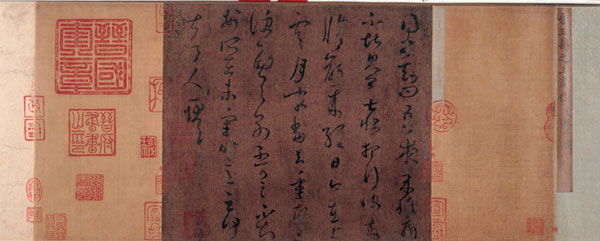文房四宝 (wén fáng sì bǎo), the Four Treasures of Study, refer to the four writing tools: 笔 (bǐ), writing brush, 墨 (mò), inkstick, 纸 (zhǐ) rice paper, and 砚 (yàn), inkslab. 笔 is a pictographic character with 竹 (zhú), bamboo, at the top, signifying the material of which the brush is made, and 毛 (máo), the animal hair or fur, below it, representing the brush head. The characters 纸 and 砚 also contain the materials they are made of – 丝 (sī), silk, on the left of the character 纸, and 石 (shí), stone, on the left of the character 砚.
Chinese forefathers held reading and writing in high esteem. This is echoed in several sayings in China. They include 读书破万卷, 下笔如有神 (dú shū pò wàn juàn, xià bǐ rú yǒu shén) – If you have read ten thousand books, you will write articles as excellent as if with help from the gods; 腹有诗书气自华 (fù yǒu shī shū qì zì huá) – reading makes a person graceful; and 读书千遍其义自见 (dú shū qiān biàn qí yì zì jiàn) – after reading a book a thousand times the meaning reveals itself. Even now, Chinese students and scholars take heed of these sayings, as they believe they provide both methods and inspiration for study.
 |
| The Tang Dynasty copy of Wang Xizhi's Shangyu Tie, preserved at the Shanghai Museum. |
Using a writing brush differs from using a ballpoint pen or typing in that it requires a greater connection between the mind and the body and intimate interlocution between the calligrapher’s heart and the world that he presents on paper. Calligraphers regard their works as reshaping the cosmic world. To achieve a state of harmony between nature and human beings, they sketch the rudiments in their mind’s eye before they 挥毫泼墨 (huī háo pō mò), wield their brushes to write in ink.
Every calligrapher has his or her own way of 运笔(yùn bǐ), writing each stroke of a Chinese character. In the long practice of this art form, they may have developed their own distinctive 笔势 (bǐ shì), writing styles, which evoke different feelings for their works.
In China, there are thousands of ways to describe calligraphic works, such as 龙飞凤舞 (lóng fēi fèng wǔ), lively and vigorous, 圆润流畅 (yuán rùn liú chàng), smooth and fluent, and 清和淡雅( qīng hé dàn yǎ), gentle and graceful. There is no lack of Chinese expressions complimenting such works. Chinese calligraphy is a sacred art, and can be a treasured gift.
We recommend:
